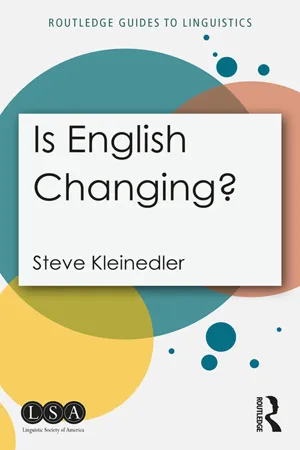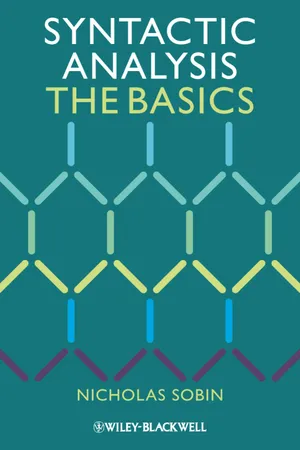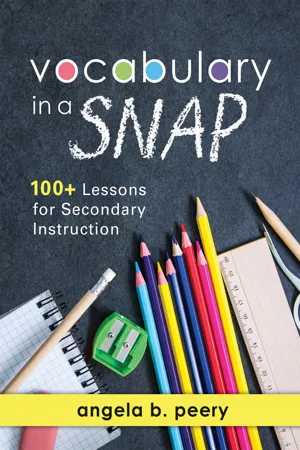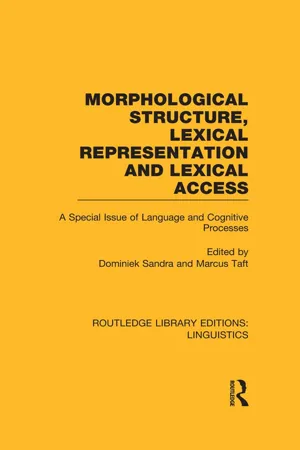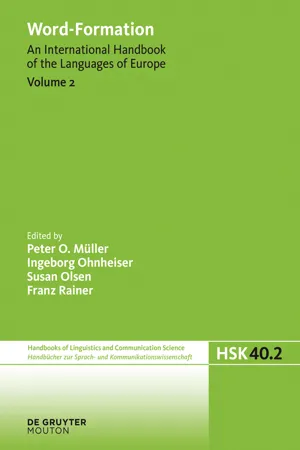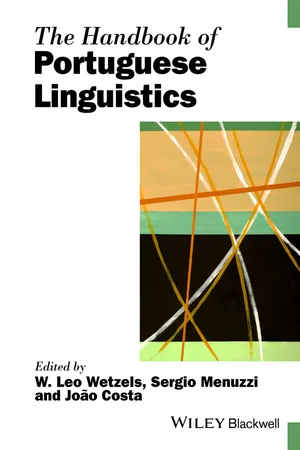Languages & Linguistics
Suffix
A suffix is a linguistic element added to the end of a word to modify its meaning or create a new word. In languages, suffixes are used to indicate grammatical categories such as tense, number, case, and gender. They can also change the word's part of speech, turning a noun into a verb, for example.
Written by Perlego with AI-assistance
Related key terms
Related key terms
1 of 4
Related key terms
1 of 3
12 Key excerpts on "Suffix"
- eBook - ePub
Vocabulary in a SNAP
100+ Lessons for Elementary Instruction
- Angela B. Peery(Author)
- 2017(Publication Date)
- Solution Tree Press(Publisher)
6 Super SuffixesA Suffix, like a prefix, is a word component added to a base word to make a new word. While prefixes are added to the beginnings of words, Suffixes are added to the ends of words. The word beauty becomes beautiful with the addition of one of the most frequently used Suffixes, -ful. The Suffixes -er and -or are added to bases or roots to create all sorts of words that denote a person’s occupation or role, like teacher, singer, dancer, writer, doctor, aviator, curator, and surveyor. Other Suffixes, though lesser used, immediately give us information about a word’s meaning. For example, -dom added to free lets us know about a state of being, freedom, and added to bore, it denotes a less pleasant state of being, boredom. Suffixes can make new words by adding either inflectional or derivational endings.Inflectional endings account for 65 percent of all Suffixed words (White et al., 1989). Inflectional endings give us grammatical information about any word they are added to. They add a letter or group of letters to base words to make different grammatical forms of the words, helping us determine how a word functions in a sentence. Verbs are inflected for number, tense, and to make participles and gerunds. For example, when the Suffix -ed is added to a verb form, we know that the verb is in past tense. When -ing is added to a verb form, we know that the verb is either serving in the present progressive tense or functioning as a participle or gerund. The sentence “I’m shopping online instead of doing my homework” uses the word shopping in the present progressive tense to describe what I’m doing right now. The sentence “Shopping as I went along, I really enjoyed the tour of Rome” uses the word shopping as a participle to describe my actions. And lastly, “Shopping is one of my favorite pastimes” employs shopping as a special kind of noun called a gerund, which in this sentence serves as the subject of the sentence. When -s and -es are added to nouns, the nouns become plural. Adjectives are inflected to make their comparative and superlative forms, as in nice, nicer, and nicest - eBook - ePub
- Steve Kleinedler(Author)
- 2018(Publication Date)
- Routledge(Publisher)
knew ) that indicate that the action happened in the past.)he runs she knows it smells Darryl laughs Lilah sings my sister waves the man with the red hat dances The second Suffix that is spelled – s is used with many nouns to show the plural form.table tables car cars toe toes Although you’re most familiar with Suffixes and affixes, there is another third kind of morpheme that attaches to a word. An INFIX is placed in the middle of a word.As you saw above, the Suffix – s is added to verbs to form the third-person singular present tense. Scholars have determined that in Proto-Indo-European, one of the many ways to form the present tense of a word was by using the infix – n – or – ne –. This infix survives in English in the word stand. Compare this present tense form with its past tense form stood . The – n – in stand is a remnant of this very old infix that indicated present tense.Although infixes are an important structural component of some languages, English doesn’t employ infixation to produce more words very often. Infixing is used most often in English to create slang words, usually with infixes that make the resulting word more emphatic (and more vulgar). One of the most common examples in English is fucking , as in absofuckinglutely and infuckingcredible. Similarly sounding (and less vulgar) words like fricking or flipping can achieve the same effect.Most affixes are INFLECTIONAL or DERIVATIONAL . Whether an affix is inflectional or derivational depends on its function.3.1.1.1 Inflectional affixes
An inflectional affix changes the grammatical function of a word. Prefixes, infixes, or Suffixes can be inflectional, but in English, inflectional affixes are usually Suffixes. - eBook - ePub
Syntactic Analysis
The Basics
- Nicholas Sobin(Author)
- 2010(Publication Date)
- Wiley-Blackwell(Publisher)
Roots are the core morphemes that a word is built on. Suffixes are endings that follow a root. Roots may be free or bound. A free root can appear as a word on its own (e.g. book or walk). A bound root cannot. Most English roots are free, but this is often not true of other languages. In Spanish, verb roots are bound – they always appear with an ending of some sort. For instance, the Spanish verb jugar ‘(to) play’ in its various forms always minimally involves (a form of) the root jug and some Suffix – the root can never be said by itself. The morphemes that attach to roots to form complex words (words of more than one morpheme) are called affixes. They include Suffixes, prefixes, infixes, and circumfixes. Prefixes such as un- in the word untangle precede the root. Infixes actually intrude into the root – English has no examples of this, so we won't worry about them here. English used to have circumfixes, a simultaneous prefix–Suffix combination, and modern German still does. For instance, one form of the German verb machen ‘(to) make’ (root: mach ; infinitive Suffix: -en) is the word gemacht ‘made’ (past participle form), containing the root and the past participle circumfix ge - - t. Affixes are bound – they do not occur as words by themselves. Now if the lexicon is a list of roots and affixes, how do these get together to form complex (multi-morphemic) words? A partial answer may lie in considering affixes in more detail. 2.5 Affix Types Two prominent types of affix exist in the lexicon: inflectional affixes and derivational affixes. Inflectional affixes simply give you all of the different forms that a word of a given lexical category can appear in. For example, a verb has five possible forms, as illustrated in (6) - eBook - ePub
The New Art and Science of Teaching
100+ Lessons for Secondary Instruction (Teaching Vocabulary to Middle and High School Students with Quick and Easy Vocabulary Exercises)
- Angela B. Peery(Author)
- 2018(Publication Date)
- Solution Tree Press(Publisher)
5 Super SuffixesA Suffix, like a prefix, is a word component added to a base word to make a new word. While prefixes are added to the beginnings of words, Suffixes are added to the ends of words. The word beauty becomes beautiful with the addition of one of the most frequently used Suffixes, -ful. The Suffixes -er and -or are added to bases or roots to create all sorts of words that denote a person’s occupation or role, like teacher, singer, dancer, writer, doctor, aviator, curator, and surveyor. Other Suffixes, though lesser used, immediately give us information about a word’s meaning. For example, -dom added to free lets us know about a state of being, freedom, and added to bore, it denotes a less pleasant state of being, boredom. Suffixes can make new words by adding either inflectional or derivational endings.Inflectional endings account for 65 percent of all Suffixed words (White et al., 1989). Inflectional endings give us grammatical information about any word they are added to. They add a letter or group of letters to base words to make different grammatical forms of the words, helping us determine how a word functions in a sentence. Verbs are inflected for number, tense, and to make participles and gerunds. For example, when the Suffix -ed is added to a verb form, we know that the verb is in past tense. When -ing is added to a verb form, we know that the verb is either serving in the present progressive tense or functioning as a participle or gerund. The sentence “I’m shopping online instead of doing my homework” uses the word shopping in the present progressive tense to describe what I’m doing right now. The sentence “Shopping as I went along, I really enjoyed the tour of Rome” uses the word shopping as a participle to describe my actions. And lastly, “Shopping is one of my favorite pastimes” employs shopping as a special kind of noun called a gerund, which in this sentence serves as the subject of the sentence. When -s and -es are added to nouns, the nouns become plural. Adjectives are inflected to make their comparative and superlative forms, as in nice, nicer, and nicest - eBook - ePub
Applying Linguistics in the Classroom
A Sociocultural Approach
- Aria Razfar, Joseph C. Rumenapp(Authors)
- 2013(Publication Date)
- Routledge(Publisher)
In many schools, at least when most of us were growing up, we were given worksheets or workbooks with boxes of words and asked to match the root word with a prefix or Suffix. Sometimes we may even have been asked to match two words together to form a compound word. In some more entertaining lessons we may have had to match two pictures together to form words, like butterfly. What is often left out of these lessons is “how” these words are formed. Here we will discuss two of the processes, namely inflection and derivation, of how the prefixes, Suffixes, and roots are used to form words.InflectionThe first process words undergo is inflection. Words are inflected to add, or mark, grammatical information. This does not result in changing the part of speech of a word, and does not result in changing the word’s meaning. An example, as we showed above, is that words in English are inflected to show plurality, or are inflected for number. The word “cat” is inflected by adding a Suffix “-s” to make “cats.” We noted in Chapter 3 that because of phonological processes that also occur in language, sometimes the addition of a morpheme, or a Suffix, will change the sound of the Suffix. For example, the same morpheme that marks plurality for “cats” cannot simply be added to “bus.” “Buss” is not the form of the word acceptable in English. So, what happens, then, is that there is the Suffixing of “-es” instead of just “-s.” This isn’t a change in the morphology, but rather the phonology. In reality all of these systems are related, but for analysis it is helpful to separate them. One of the assumptions in linguistics is that the word undergoes changes in morphology first, and then phonology, at least in theory. So, one could say lexical item “bus” is inflected for “number,” or bus + -s, and then changes to match the phonology of the language, thus resulting in the word “buses.” So, we can say that -s and -es are the same morpheme, or the plural marker.Inflection usually is seen, consistently, throughout a particular language. If the language inflects for person (i.e., first, second, third), then, usually, all of the verbs will be inflected. Even in instances where there is irregularity in the language, the verb would contain the grammatical information of person. In English, for example, though not every verb is made past tense by adding “-ed,” almost every verb does show that past tense information in some way. - eBook - ePub
English Words
Structure, History, Usage
- Francis Katamba(Author)
- 2015(Publication Date)
- Routledge(Publisher)
-ism):femin-ist, capital-ist, Marx-ist, structural-istAdj. → Adj.-ish‘having the property of being somewhat X’: narrow-ish, blu-ish, pink-ish Verb → Verb-er‘adds frequent or iterative meaning to verbs’: chatt-er, patt-er, flutt-er Having studied [4.11], I suggest that you now find one fresh example of a word that contains each of the Suffixes listed. Afterwards identify two non-neutral Suffixes which affect the location of stress in the base to which they are attached and two neutral ones that do not. This will give you a taste of the challenge posed by Suffixes for morphological theory by the interaction between word-formation rules and phonological rules. We will take up that challenge in the next chapter.Let us now turn to inflectional Suffixes . English has not got much inflection, being essentially an isolating language, i.e. a language whose simple noncompound words normally contain just one morpheme (e.g. cut, walk, snow). The little inflection that it has consists of Suffixes rather than prefixes. [4.12] contains a sample of common inflectional Suffixes.-
[4.12]
a Verbal SuffixesFunctionExample-s3rd person, singular, present He snore-s -ingprogressive aspect (denoting action in progress) He is snor-ing -edpast tense He snor-ed b Noun Suffixes-snoun plural marker road-s c Adj Suffixes-ercomparative adjective/adverb slow-er, soon-er -estsuperlative adjective/adverb slow-est, soon-est
A base to which inflectional affixes are added is called a stem . Singling out stems from other bases in this fashion enables us to highlight the distinction between inflection and derivation. This is important, as we will see in sections (11.2.2) and (11.4.1), not only for the way linguists describe language but also for the way in which the brain processes words. So the bases in road-s, government-s and schoolboy-s are all stems since they are followed by the plural inflectional Suffix -s. Of course, the internal structure of these stems is different: road is a simple root, govern-ment is a complex one, containing as it does the derivational Suffix -ment; and schoolboy - eBook - ePub
Morphological Structure, Lexical Representation and Lexical Access
A Special Issue of Language and Cognitive Processes
- Dominiek Sandra, Marcus Taft(Authors)
- 2014(Publication Date)
- Routledge(Publisher)
Their basic function is a syntactic one, conveying how a word (or the phrase to which it belongs) grammatically relates to other sentence parts (e.g. the German accusative form of the determiner in Er sah den Mann [he saw the man] signals that the noun phrase relates to the verb as direct object) or conveying grammatical agreement with other words (e.g. person agreement as in he plays, gender agreement as in der Mann [the man]). As inflected forms are syntactically constrained, it is understandable that major portions of the inflectional system of many languages are rule-governed, resulting in the predictability of regular inflected forms. Inflectional affixes are not tied to single lexical items but are part of a morphological paradigm, which is linked to a particular form class (e.g. verbs) and whose slots are defined in terms of syntactic properties (e.g. the inflectional Suffix in plays fits within the present-tense paradigm and requires a thirdperson singular subject). Given these properties, it seems apt to treat regularly inflected forms outside the domain of lexical business, as different realisations of a single word (or lexeme). Thus considered, the hypothesis of a morphemic lexicon is highly plausible from the point of view of regularly inflected forms (Chomsky, 1965). The Impact of the Spelling System. Let us see whether the representational claim derived from this linguistic characterisation of inflectional morphology makes sense as far as its implications for the on-line processing of written words are concerned. At the level of the composition process, no problems would arise. The meaning of affixes in forms like boys and plays can be described as a simple semantic predicate, taking the stem meaning as its argument (PLURAL[BOY], PRESENT[PLAY]), and which would be interpreted by the semantic module in the language system (see Forster, 1979, for a structure of the language processor) - eBook - ePub
- Philomena Ott(Author)
- 2014(Publication Date)
- Routledge(Publisher)
11 How Affixes Provide Signposts and Enhancement of Skills DOI: 10.4324/9780203966075-11- Why the study of the history of words is a key to a treasure trove of spelling knowledge and understanding
- Why root words are important basic building blocks for word study
- Checklists of useful root words
- Prefixes: an overview
- Checklist of prefixes
- Practical suggestions for teaching prefixes
- The role of grammar and its influence on Suffixes
- Checklist of Suffixes
- The ‘Seven Seriously Super Suffixing’ rules
- The ‘Seven Absolutely Fabulous’ rules for Suffixes
- Practical suggestions for teaching Suffixes
- Summary and conclusions
KEYWORDS
- Affixes
- Analytic phonics
- Antonyms
- Borrowed words
- Comparative forms of adjectives
- Euphony
- Etymology
- Grapheme
- High-frequency word
- Morpheme
- Morphology
- Phoneme
- Prefixes
- Root words
- Spelling pronunciation
- Suffixes
- Synthetic phonics
- Word class
- Word webs
Why the study of the history of words is a key to a treasure trove of spelling knowledge and understanding
Awareness of the etymology of words, which includes the study of the origins and use of Greek and Latin prefixes, Suffixes and root words, enhances skills, promotes understanding of word meanings and generates many new words.Root words cycl (circle) Greek bicycle loc (place) Latin locate Suffixes ology (study of) Greek biology phobia (excessive fear of) Latin arachnophobia (fear of spiders) Prefixes anti (against) Greek antibiotic circa (around) Latin circulation Understanding of the derivation and meaning of affixes and root words makes them easier to learn to pronounce, to spell and to remember. Brown (1947) established that 60 per cent of words in printed texts were derived from Latin and Greek words. Otterman (1955) conducted an experiment on 12–13-year-olds which included learning about word origins. After thirty ten-minute lessons, the pupils were better at spelling and understanding the meanings of the words when they had been taught the meaning and the derivation of the words studied. Hanna et al. (1971) - eBook - ePub
- Kristin Denham, Anne Lobeck(Authors)
- 2018(Publication Date)
- Routledge(Publisher)
unhappiness each has its own entry. Other languages have agentive morphemes too. American Sign Language, for example, has an agentive morpheme which turns verbs like TEACH into nouns like TEACHER.Inflectional affixes do not change the category of the word they attach to, nor do they create new dictionary entries. Instead, they express grammatical information, such as tense, gender, number, case, and other features. English has relatively little inflectional morphology, compared to other more highly inflected languages. In fact, in English there are only eight inflectional affixes, though three of them are the Suffix -s, which displays three distinct functions.Nouns possessive -s plural -s Mo’s book books Adjectives comparative -er superlative -est Mo is taller. Mo is tallest. Verbs 3rd person singular past tense present participle past participle Mo walk s Mo walked Mo is walking Mo has walked Mo has eaten In comparison, Old English (OE) was highly inflected. The following comparison of inflectional affixation of the verb love provides an example. In Present Day English (PDE), the verb has no inflectional affixation in the present tense except in the third person singular (loves), but in OE there are four distinct Suffixes (note also the different forms of the personal pronouns):Table 4.1 Conjugation of the verb ‘love’ in PDE and OEPresent Day English Old English I love ic lufie you love þu lufast he/she loves heo lufaþ we love we lufiaþ you love ge lufiaþ they love hie lufiaþ Although in English, derivational affixes are either prefixes or Suffixes, and inflectional affixes are Suffixes only, in other languages affixes can be infixes and circumfixes. In Inuktitut, a language of Western Canada, and a member of the Eskimo-Aleut language family, the infix -pallia, - eBook - ePub
English Words
A Linguistic Introduction
- Heidi Harley(Author)
- 2017(Publication Date)
- Wiley-Blackwell(Publisher)
competitor. None of the Germanic Suffixes alter the phonological shape of their stems like that.Of course, this difference has its source in one of the major differences between languages of Latinate origin like French and languages of Germanic origin, like Dutch, or the English of 800 years ago. The former have mostly bound roots, and the latter have mostly free roots – so when Latinate vocabulary was borrowed wholesale into English, its distinct morphological properties were borrowed too. But a child learning modern English doesn’t need to know that. All he or she needs to notice, and remember, is that some Suffixes can go with bound roots, and trigger phonological changes, while others never do. Then he or she just has to annote each kind of Suffix as needing certain properties in its stem, and everything else follows.6.6 Representing Complex Suffixal Restrictions
Let’s say the mental lexicon entries for the Germanic Suffixes need to include the information that their stem has to be an independent phonological word. This kind of restriction is rather like the unstressed, open-syllable restriction that we saw for the comparative -er; there, we had to include information about the syllable structure of the stem in the listeme. Here, we’ll have to include information about the phonological wordhood of the stem. The usual notation for “phonological word” is the lower case Greek letter omega: ω. We’ll subscript ω to the blank space that stands for the stem in the syntactic part of the entry to show that the stem has to be a phonological word for these affixes to go on. The final entry for -ness, then, will look like this:(16) Phonology Syntax Semantics /nεs/ [[ ____ ω ] {A, N} -ness ]N “the quality of being X” The entries for the Latinate Suffixes won’t have the phonological-word restriction on them, of course, but they will impose other restrictions. In particular, to explain why Latinate affixes don’t attach to words derived with Germanic affixes, there must be something that the Latinate Suffixes look for in their stems that the Germanic Suffixes don’t have. - eBook - ePub
- Peter O. Müller, Ingeborg Ohnheiser, Susan Olsen, Franz Rainer(Authors)
- 2015(Publication Date)
- De Gruyter Mouton(Publisher)
3.3. Precise definition of closing Suffixation
The following definition accounts for all instances of closing Suffixes we discussed above:Closing Suffixation is a base-driven morphological phenomenon whereby a Suffix closes the word to the addition of further Suffixes of the same type: a closing derivational Suffix is never followed by another derivational Suffix, except by itself, i.e. a closing derivational Suffix can be repeated on adjacent cycles or followed by inflection. A closing inflectional Suffix is never followed by another Suffix, be it derivational or inflectional.4. Form and semantics in closing Suffixation
4.1. The role of morphotactics
Homophonous Suffixes can be used to check the role of morphotactics in closing Suffixation. Put differently, if homophonous Suffixes are always closing, morphotactics defines the feature [+/-closing]. The Polish Suffixes -k 1 -a and -k 2 -a in (3) below are an instance of homophonous Suffixes. The Suffix -k 1 -a derives objects, whereas the Suffix -k 2 -a subserves the formation of nouns for female humans from male humans. Intriguingly, the nouns derived by -k 1 -a can be further derived (3a), whereas nouns derived by the Suffix -k 2 -a do not serve as bases for further derivation (3b).Thus, (3) provides evidence that morphotactics cannot define closing Suffixation.However, Aronoff and Furhop’s (2002 ) account of German closing Suffixes relies on morphotactics. Following the tradition of generative morphology, they related the German closing Suffixes to a non-semantic fact − the presence of a linking element in a compound with a first constituent a derived noun that terminates in a closing Suffix. To exemplify:(4) Üb-ung-s-sache to train-ing-linking element-matter‘a matter of training’In this example, -ung is a closing Suffix and -s- is a linking element. Note that German is a language with very productive compounding and almost every noun can be used as a first constitutent of a compound. Therefore, Aronoff and Fuhrhop (2002 ) had to provide an explanation for why a closing Suffix is followed by word-formation material in compounds, and they claimed that the German linking elements “reopen” closing Suffixes. However, linking elements are not a perfect diagnostic criterion for the feature [+/− closing]. For example, they cannot explain the closing character of the Suffix -ismus that derives abstract nouns, as in the German noun Real-ismus ‘realism’, but does not require a linking element in a compound, e.g., Real-ismus-streit ‘polemic on realism’. Intriguing-ly, the Suffix -ismus (English -ism , Russian -izm , Polish -i/yzm , Bulgarian -izăm - eBook - ePub
- W. Leo Wetzels, Sergio Menuzzi, João Costa(Authors)
- 2016(Publication Date)
- Wiley-Blackwell(Publisher)
6 but this topological description needs to be complemented by a grammatical analysis. In fact, word-formation affixes can be predicators, which means that they are the head of the structure they generate, or modifiers. In Portuguese, all predicators are Suffixes (= derivational Suffixes), all prefixes are modifiers, and some Suffixes (= evaluative Suffixes) are modifiers.1.1. Derivational Suffixation
In Portuguese, derived words are generated on the basis of derivational Suffixes according to their selectional and inherent properties. Selectional properties are the set of constraints involving the base form. Base forms can be roots (adjective roots, as in (6a); noun roots, as in (6b); verb roots, as in (6c)), stems (only verb stems are available, as in (6d–f)) or words (just adjectives, as in (6g)). Inherent properties define the features of the output, which is always a root that will be projected into a stem, first, and then to a word: derived forms can be adjective, adverb, noun, or verb roots:Selectional properties vary from Suffix to Suffix. They can make use of, at least, phonological/prosodic properties of the base (see below the allomorphy of –ez ~ –eza, for instance), syntactic properties (especially for deverbal Suffixes that require information on the argument structure of the base verb) and semantic properties (the collective noun forming Suffix -agem selects the root of count nouns: ˈ folha→foˈ lhagem“leaf→foliage”.Besides defining the syntactic category of the output, derivational Suffixes also participate in broad semantic categories. The existence of competing Suffixes occurs inside these categories:Derivational processes available in EP and BP are virtually identical: they share the same set of Suffixes, and their behavior is quite similar. There is, however, a margin of contrasts that is worth noting. It is quite common to find different Suffixes competing within the same morphosemantic category:Thus, derived words in EP and BP are derived autonomously, yielding different results within a given morphosemantic category. Another distinction is set by the mutation of some affixes—for instance, in BP, the Suffix –d(a), in the expression X–da ((dar uma) olhada “to take a quick look”), forms brief action nouns. No such Suffix exists in EP, although there is a semantically equivalent Suffix, which is –dela ((dar uma) olhadela
Index pages curate the most relevant extracts from our library of academic textbooks. They’ve been created using an in-house natural language model (NLM), each adding context and meaning to key research topics.
Explore more topic indexes
Explore more topic indexes
1 of 6
Explore more topic indexes
1 of 4

